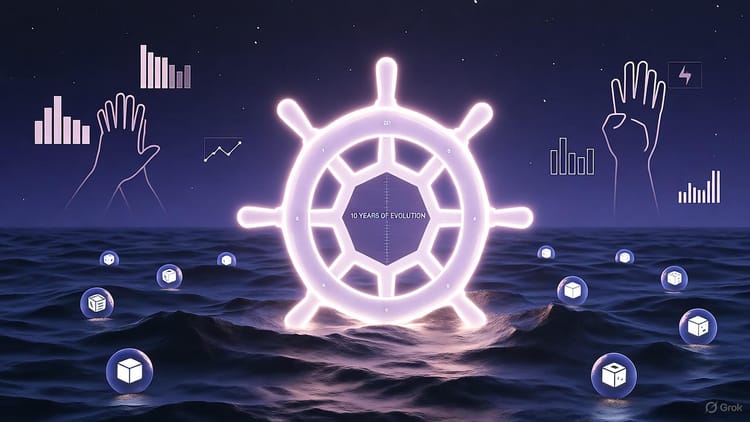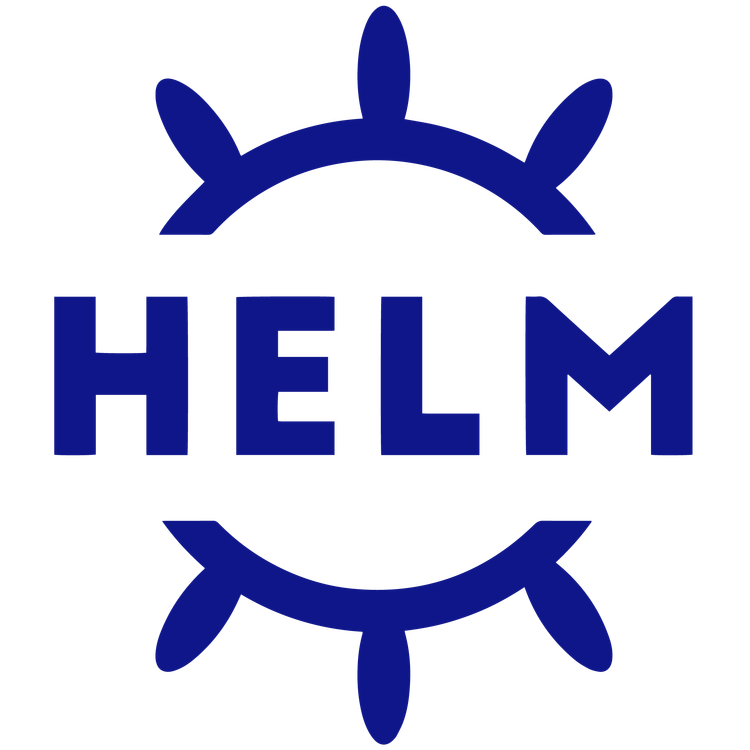Helm v4.0.0 Stable: Steering Kubernetes into a Bolder Horizon

Man, it's hard to believe it's been exactly a decade since that chaotic Deis hackathon where a few of us scribbled out the first sketches of what would become Helm. Back then, it was just a wild hunch: why not package up Kubernetes apps like they're old-school Debian packages? We laughed, coded through the night, and somehow, that doodle turned into the beast of a tool millions rely on today. I poured my heart into that anniversary post last month, reminiscing about the scrappy origins and the improbable rise. But life's full of plot twists, right? Here I am, on this very day—November 12, 2025, smack in the middle of KubeCon North America—dropping a sequel because today is when Helm v4.0.0 finally hits stable. No more teasing betas or release candidates; this is the real McCoy, ready to tackle the next wave of Kubernetes madness.
If you're knee-deep in clusters like I am, you know why this matters. Kubernetes has grown up—it's not just for hip startups anymore; it's the backbone of everything from your grandma's banking app to AI training farms. But with great power comes great YAML sprawl. Helm v4 sharpens the knife, making deploys safer, faster, and less likely to leave you swearing at your terminal at 2 a.m. In this post, I'll walk you through the highlights, the gotchas, etc, and yeah, I'll tip my hat big-time to the folks who made this magic happen. Grab a coffee; let's dive in.
For a quick overview of Helm itself—because if you're new here, welcome aboard—it's the package manager for Kubernetes, turning complex YAML soups into reusable "charts" for apps like databases or web servers. v4 builds on that, adding layers of polish without ditching the core magic.
The Wild Ride to v4: Beta Blues to Stable Cheers
Look, Helm v3 was solid gold—OCI support, chart magic, the works—but after a decade, it was creaking under its own weight. Backwards compat is a blessing and a curse; it got us adoption, but it also meant lugging around ancient baggage. v4? It's like finally cleaning out the garage: the junk got tossed, the gems stayed, and some rocket boosters got bolted on.
The push started with those Helm Improvement Proposals (HIPs)—you know, the ones that spark endless GitHub flame wars and SIG soul-searching. HIP-0023 for Server-Side Apply was a no-brainer for taming resource conflicts, and HIP-0026 for plugins turned what used to be hacky scripts into something... elegant? Alphas hit early 2025, betas in October had us all holding our breath, and now 4.0.0's out the door. This release? Pure community fire. More on that later—first, the shiny bits that have me grinning like a kid with a new gadget.
The Features That'll Make Your Day (or At Least Your Deploy)
v4 isn't some incremental patch; it's packed with stuff that'll save you time and sanity. I'll break 'em down with a bit of hand-holding—think step-by-step, because I remember fumbling these myself.
1. Server-Side Apply: Ditching the Client-Side Headaches
If you've ever battled merge conflicts on shared ConfigMaps, you get it—Kubernetes' Server-Side Apply (SSA) has been around since 1.18, but Helm v3 treated it like a side quest. v4 makes it the main event: helm upgrade now defaults to SSA through the kube client, with the old three-way merge available behind a flag. The API server plays referee, so fewer "hey, that's my field!" errors.
Here's the gist:
- Helm spits out your manifests like always.
- Instead of the old client-side apply (which could get messy in teams), it sends SSA payloads straight to the server.
- Boom: cleaner diffs, happier ops folks. You can override with
--server-side=falseif needed.
Try this in your terminal:
helm upgrade my-app ./mychart --install # SSA does the dirty work now by default
If your cluster's ancient (pre-1.22), it falls back without fuss. In my last gig, this cut upgrade drama by half—trust me, it's a game-changer for multi-dev environments.
2. Plugins, But Way Cooler: From Bash Hacks to WASM Wizards
Plugins in v3? Fun, but sketchy—like trusting a stranger's shell script with your cluster keys. HIP-0026 flips the script: now they're OCI-packaged, signed with provenance verification, and can run in an optional WebAssembly sandbox via Extism for better security and portability. No more subprocess roulette; it's secure, portable, and kinda futuristic.
Quick evolution rundown:
- Old school:
helm plugin installgrabs a tarball, runs whatever—yikes. - v4 style:
helm plugin install oci://ghcr.io/org/myplugin, verify the sig and provenance, execute (in WASM if configured). - Extra perk: Post-renderers tap in, even for hooks.
I whipped up a quick linter plugin last week; packaged it, signed it, and it just works across machines. Security nerds rejoice—no arbitrary code risks. And yeah, it's got that "plugins with a PhD" vibe.
3. OCI Tweaks and Values File Shenanigans: Digest the Details
OCI gets love: pull charts by digest (helm install oci://registry/chart@sha256:...), with improved TLS handling and warnings on insecure pulls. Multi-doc values files? Finally! Your values.yaml can now be split across multiple documents for cleaner management of complex configs.
In CI/CD land, this means reproducible deploys without auth headaches. Pulled a chart from a private registry the other day—smooth as butter.
4. Templating and Linting: Little Wins That Add Up
New helpers like mustToYaml and mustToJson (error out if they bomb—strict and sassy), plus improved linting that better handles chart structures. helm show crds gets tweaks for easier output parsing. Templating went from typewriter to full-on word processor.
To visualize the glow-up:
| Feature | v3 Way | v4 Way | Why Bother? |
|---|---|---|---|
| Server-Side Apply | Client-only | Default SSA (flag for legacy) | Less team turf wars |
| Plugins | Tarballs & shells | OCI/signed/WASM-optional | Secure and shareable |
| OCI Pulls | Tags only | Digests + improved TLS | Bulletproof reproducibility |
| Values Files | One doc | Multi-doc | Tame those monster configs |
| Templating | Basic helpers | mustToYaml/mustToJson | Strict error handling |
The Breaking Changes: Ouch, But Worth It
Majors always come with thorns. v4's mostly CLI tweaks and internals—your v3 charts? Still golden.
- Flags shuffled:
--force→--force-replace. Scripts, beware! - Plugins: Completely redesigned per HIP-0026; migrate legacy ones.
- Axed:
--no-updateon repo add, plus other deprecated bits.
Audit like this:
helm upgrade --help | grep force # See the new kid: --force-replace
Docs have the full deets; stage-test everything. It's like swapping your comfy old keyboard for a mechanical one—fancy, but the first day? Finger fumbles.
Hats Off to the Helm Heroes
I can't gush enough. v4's 260 PRs deep, fueled by Slack marathons and "one more review" pleas. This isn't just a release—it's the brainchild of an incredible team of maintainers who've poured their evenings, weekends, and sheer willpower into making Helm evolve without breaking the world. Big, heartfelt love to @mattfarina, @adamreprogle, @cjwagner, and the entire rotating squad of maintainers who've been the unsung captains steering this ship through HIP debates, beta bashes, and those endless "just one more test" cycles. They've taken the foundation laid back in that hackathon and turned it into something robust, innovative, and downright indispensable.
Wrapping It Up: Charts Ahead
v4.0.0? It's Helm leveling up—SSA for peace, plugins for punch, OCI for precision. Gotchas are light; gains are heavy. Watching this unfold from the co-founder perch feels like seeing that quirky startup kid not just survive, but thrive—nostalgia mixed with pure awe at what the team has built.
Hit the changelog for depths, toy with a signed plugin, or jump into v4.1 contribs. Wild thought: With this toolkit, could Helm orchestrate entire app ecosystems? Universe-curious stuff.


